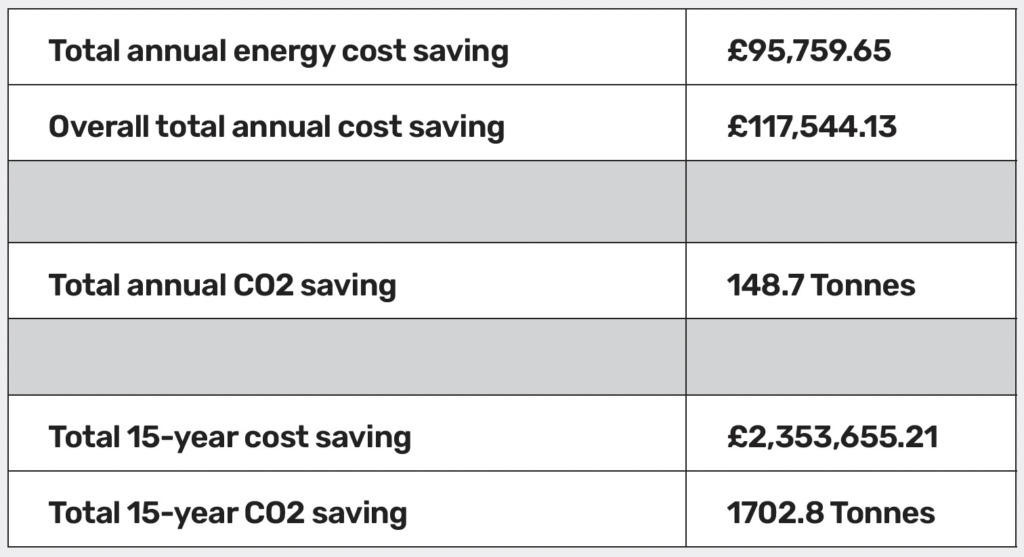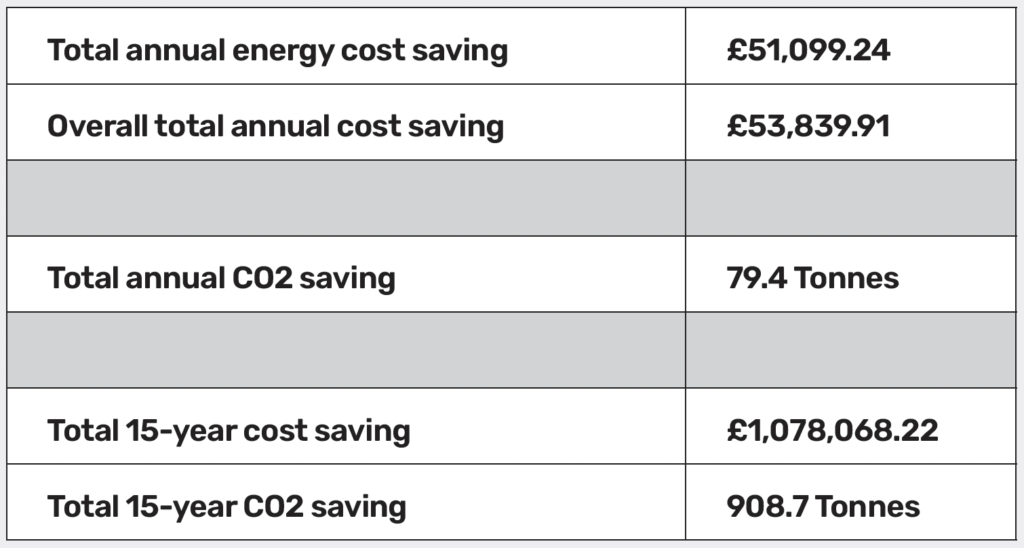Riello UPS’ Business Development Manager, Chris Cutler, explores the next generation of ultra-high efficiency modular UPS systems and how they will help data centre operators reduce their total cost of ownership.
While every UPS manufacturer strives to achieve 100% efficiency, current technology – not to mention the laws of physics – makes that impossible. However, ongoing developments mean that we can now get pretty close.
The latest generation of modular uninterruptible power supplies is capable of exceptionally high efficiency while still delivering the robust and reliable protection that data centres rely on.
A brief history lesson
In years past, most UPS systems were designed and manufactured using a two-level architecture inverter and could typically deliver efficiency of around 96%.
Designs evolved from two to three-level architectures, which needed more components and processing power to control, but helped boost efficiency up to 96.5%. Adapting the materials used in filter design enabled UPS manufacturers to push efficiency levels upwards of 97%.
So what’s the next big step? How can we boost efficiency even further?
The biggest change is likely to come in the shift from using traditional silicon based IGBT components to silicon carbide (SiC) semiconductors. Of course, SiC is nothing new; it’s widely used in the electric car industry, which has helped make the technology more readily available.
In UPS manufacturing, silicon carbide components offer several inherent advantages over standard IGBTs: they are more efficient as they exhibit lower electrical resistance, which reduces energy losses; they deliver increased power density; and can operate at higher temperatures.
SiC also has faster switching capabilities, resulting in a more responsive UPS, and it is more durable than IGBT too, leading to extended component lifecycles and reduced maintenance needs.
Smart, scalable, sustainable power
Multi Power2 is the evolution of our modular UPS range. Building on the near decade of success of the original Multi Power series, Multi Power2 comprises the 500 kW MP2 and the scalable M2S, which is available in 1,000-1,250-1,600 kW versions. Up to four UPS can be installed in parallel, enabling the M2S to protect data centres requiring up to 6,400 kW of power in a single system.
The modular nature of the solution offers risk-free ‘pay as you grow’ scalability, which reduces the likelihood of wasteful oversizing and helps optimise the initial investment.
Embracing state-of-the-art silicon carbide components, the new range features high density 67 kW power modules that enable the UPS to achieve best-in-class ultra-high efficiency of up to 98.1% in online mode, ensuring maximum protection to the critical load, whilst minimising a data centre’s operating costs and energy losses.
Before we move on, just a quick point on UPS efficiency. When stating their efficiency ratings, many UPS manufacturers use an ‘average efficiency’ figure, which effectively is a combination of the UPS’ operating modes over a period of time.
For example, the period might cover 24 hours split between 12 hours running in online mode followed by 12 hours in ‘ECO’ or economy mode, where a boost in efficiency comes alongside a trade-off of reduced protection to the critical load.
For some applications this is perfectly acceptable, but not for a data centre. At some point, you’ll be exposing your infrastructure to higher levels of risk from a power disruption.
These average efficiency ratings aren’t a true reflection of the real-life operating conditions and will result in artificially inflated efficiency values. With Multi Power2, you can be assured that the 98.1% efficiency is in true online UPS mode – there’s no reliance on the ‘smoke and mirrors’ of average efficiency to inflate the actual figure.
Efficiency at all load levels
Thanks to its Smart Modular Architecture and intuitive Efficiency Control Mode, Multi Power2 delivers ultra-high efficiency even when your data centre is running at lower loads.
Efficiency Control Mode is a sophisticated feature where the UPS’ microprocessors and control software only activate the required number of power modules according to the real-time load and required redundancy, putting any surplus modules into standby.
Doing so ensures the UPS consistently operates at optimum efficiency. Standby power modules can stay in this energy-saving state for several hours, before swapping with one of the active modules to ensure components age at a similar rate.
If there’s any disruption to the mains supply, all the inactive modules immediately restart to provide maximum protection. The same happens if there’s a fault with any of the modules or a sudden increase in the data centre’s load.
Practical proof of savings
As you’d expect, ultra-high efficiency modular UPS such as Multi Power2 deliver cost, energy, and carbon emissions savings when replacing old legacy monolithic UPS systems. But they also significantly outperform standard modular solutions too.What follows are two actual TCO calculations provided to data centres in the process of upgrading their UPS. Comparison 1 below outlines the savings as a result of replacing a monolithic 1 MW N+1 UPS system (made up of 3 x 12 pulse 600 kVA 0.9pf UPS) with a 1,250 kW Multi Power2.

While Comparison 2 below showcases the savings delivered by a 1,250 kW Multi Power2 at 1 MW load versus another manufacturer’s latest modular offering, with their system comprising 3 x 400 kVA modular units.

As well as these substantial cost and carbon savings, the innovative design behind Multi Power2 delivers other significant benefits.
For example, capacitors usually need replacing between years five to seven of a UPS’ service life. Over the course of a typical 15-year lifespan, they would require swapping out two or potentially three times, which all adds up.
However, the long-life components used in Multi Power2 mean it is realistic to go through the entire 15-year lifespan of the product without having to replace the capacitors at all. This results in fewer end of life components and materials that require recycling and disposal too.
Because of its robust design that avoids any single point of failure and the hot-swappable nature of all modules and major components, Multi Power2 combines a high MTBF (Mean Time Between Failures) with a low Mean Time To Repair (MTTR) of less than 30 minutes. Sophisticated humidity and temperature sensors incorporated into every power module help to build up a full thermal map and assist with monitoring and predictive maintenance.
Taking all these factors into account, a typical site could save more than £80,000 to £120,000 in maintenance costs over the 15-year lifespan of the UPS. This figure doesn’t even consider some of the additional knock-on environmental benefits such as reducing the amount of miles service engineers will travel, as a result of fewer maintenance visits.

